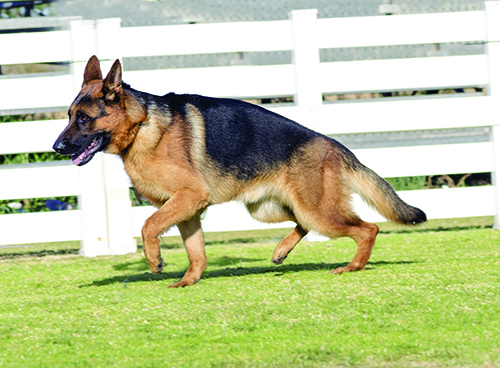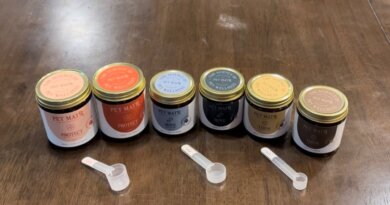Adopt or Shop – Whole Dog Journal

Wanna see a fight? Start a debate on social media about what’s best: adopting a dog or puppy from a shelter or rescue group or buying from a responsible breeder. If the sparks don’t fly quickly enough, throw some gas on the flames by supporting just one of those options – either one! – in very strong terms. That ought to do it.
In recent years, the “rescue dog” people have seemingly won the moral high ground in this argument, with their position helpfully shortened to a bumper sticker-friendly three words: “Adopt, Don’t Shop!” In fact, this position has become so politically correct that folks who do want to buy a purebred pup (or a “designer mix”) are often tight-lipped when they discreetly buy a puppy.
In my view, folks are fighting about the wrong thing altogether. Honestly, I don’t care whether you buy your puppy from a breeder or pay an “adoption” fee from a rescue or shelter. Because the truly most important thing is to make sure that the source is ethical and responsible and that they do far more than just meet the minimum standards of care for all the dogs in their custody.
Looking to add a new dog to your family? Be aware that there are many immoral and unscrupulous breeders, shelters, and rescue groups out there. One good way to reduce the number of these bad actors is to procure your dog or puppy from only a responsible, conscientious, and humane source, whether that’s a breeder, shelter, or rescue organization. Let’s look at how to identify them.
TRAITS OF RESPONSIBLE, ETHICAL BREEDERS
Yes, there is such a thing as a responsible, ethical breeder – thank goodness! Although many of the 30 or so dogs I’ve owned in my lifetime were rescued mixed-breeds, I’ve also owned a number of purebred dogs, and I appreciate a healthy, well-socialized representative of a pure breed of dog as much as anyone.
Here’s what I would look for in a responsible breeder. A responsible breeder will:
* Plan ahead and plan carefully. Only dogs who have been health-tested and cleared for all the identifiable, heritable genetic diseases common in that breed will be included in the breeding program of a responsible breeder. (For more about what those conditions may include, see the Humane Society Veterinary Medical Association’s “Guide to Congenital and Heritable Disorders” at tinyurl.com/WDJ-heritable-disorders.) Good breeders also will provide verification of the sire’s and dam’s testing clearances to puppy buyers.
* Breed only dogs who are physically and behaviorally sound. Pay at least as much attention to the temperament of the dogs being bred as their genetics, movement, and structure. Far too many breeders overlook behavioral unsoundness in exchange for breed type and structure. Behavior is always a combination of genetics and environment.
* Breed in a limited fashion. Good breeders produce only as many puppies as they know they can place (have homes lined up in advance). They also limit the frequency with which any individual female dog is bred (not before the age of 2, not after the age of 5 to 8 years, and no more than one litter per year, maximum.
Note that the American Kennel Club will register puppies from dams who are as young as 8 months old to as much as 12 years old! In my opinion, that’s unconscionable.
* Avoid the lure of extremes. There are countless examples today:
• Brachycephalic (short-nosed) dog breeds (especially Pugs, Boston Terriers, Bulldogs, and French Bulldogs). In our opinion, the progression of these breeds to the point they can barely breathe and some can barely walk is criminal.
• German Shepherd Dogs – that is, the show-ring-favored slope-backed models. These dogs have significant problems with joint and cartilage distress, hip dysplasia, and osteoarthritis.
• Breeds with exaggerated loose skin (“wrinkles”). Shar-pei are the poster dogs for this, but Bloodhounds, Bulldogs (again), and various Mastiffs, often have chronic, lifetime issues with pyoderma (skin infections) due to bacteria and yeast getting trapped in skin folds.
• Tiny toy breeds. Many of the most extremely small dog breeds face major health issues, including hypoglycemia, heart defects, collapsing trachea, seizures, respiratory problems, digestive problems, and blindness. (“Teacups” are sometimes created by breeding runts to runts – and runts are more likely to have health defects to start with.)
• Dogs with “rare” colors, eye colors, coats, sizes, and other traits. Every extreme in canine fashion becomes linked to health problems in a small number of generations. To quickly develop a fashionable trait, unscrupulous breeders look for individuals with the trait and begin inbreeding with the progeny. This will produce salable individuals with the trait in the fewest number of generations – and cement the undesirable traits that the original individuals had into the progeny, too.
Ethical breeders move away from fashionable or marketable extremes and anomalies. They help bring their breeds back to healthy and traditional standards for the breed.
* Minimize stress. Pregnant mothers who are subjected to stress will flood their puppies with stress hormones in utero. This can cause a lifetime of negative behavioral effects on the pups she carried while stressed.
* Uber-socialize the puppies. Far too many breeders who consider themselves responsible don’t understand what true socialization involves, or that the primary socialization period starts as young as 4 weeks. A considerable amount of socialization must be done while the pups are still with the breeder. Most breeders don’t come anywhere near close to providing enough.
* Place only healthy puppies. A puppy with physical defects may be placed with someone capable of caring for a dog with disabilities, as long as the condition is thoroughly disclosed. But a sick puppy should never be transported or placed in a new home.
* Screen their puppy purchasers. A responsible breeder doesn’t sell her puppies to anyone with the purchase price. Instead, she questions would-be purchasers about their home, yard, fencing, family members (including other dogs and other animals), experience with dogs, intended activities with the puppy, and so on. She asks for a veterinary reference, and checks to make sure the veterinarian’s office has only praise for the prospective owner’s level of responsibility for their other pets.
* Allow potential purchasers to visit. Puppy buyers should be able to meet the friendly mother and see well-socialized puppies raised in a clean in-home environment (not an outdoor kennel). Not allowing potential buyers to see the home environment is a huge red flag.
Recently we viewed the website of a breeder that mentioned many times how many acres their “farm” was comprised of. However, Google satellite images clearly showed that the acreage was completely unfenced, and that there were only two major buildings on the property: a massive home and a two-story building. All the dogs bred on the property live in cages and kennels inside that building; they don’t get to romp on all those acres.
If you really care about dogs, make sure you visit their source and see for yourself where and how your puppy’s forebears have spent their lives.
* Provide references. A good breeder will be able and happy to share the name of her veterinarian, as well as contact information for people who have previously purchased puppies from the breeder.
* Provide support. A responsible breeder will be available to purchasers at any time during the dog’s life if the new owners have questions or concerns.
* Never – ever – sell to a pet store or puppy broker.
* Take back any puppy. This is critically important – and perhaps the most telling bit of information about a breeder of all. Responsible breeders will take back any dog they produced at any time during that dog’s lifetime, if the buyers are unable or unwilling to keep it for any reason.
Puppy Mills and the AKC
What is a puppy mill? There isn’t an official definition; it’s a pejorative term for a high-volume puppy producer, generally used by those of us who work in shelters or rescues and who deplore the overabundance of homeless dogs in this country. I’d define a puppy mill as a dog-breeding operation that puts profits over the welfare of the dogs, where dogs are forced to breed their whole lives until they are physically incapable of doing so and then abandoned – either auctioned off, sold to a rescue group, or killed in some manner.
I can’t tell you how many times someone has said to me, “My puppy didn’t come from a puppy mill; she’s registered with the American Kennel Club (AKC).” This always makes me sad, because it’s clear that the person didn’t want to buy from or support a puppy mill and thought that an AKC registration indicated a high-quality breeder. Unfortunately, puppy mills and AKC registrations are not mutually exclusive. There are hundreds (if not thousands) of high-volume kennels that meet all the hallmarks of puppy mills, churning out pups who are registered or registerable with the AKC.
The only thing an AKC registration guarantees is that the puppy’s parents were registered with the AKC, too. In no way does registration guarantee the puppy’s health or quality or indicate a humane place of origin. In fact, the AKC is well known for opposing legislative attempts to monitor or regulate breeders in any way. The organization makes its money from the registration of dogs and from entry fees for events that only dogs who are AKC-registered can compete in. Taking effective steps to limit the mass-production of registerable puppies runs counter to its financial well being.
TRAITS OF RESPONSIBLE, ETHICAL SHELTERS AND RESCUE GROUPS
Here are the things I would consider necessary for a shelter or rescue group to be responsible and ethical:
* Provide quality care to all the animals they take in. Meeting this first and foremost responsibility entails providing adequate amounts of good-quality food, water, and shelter; exercise and enrichment; and an environment where the dog feels safe and has species-specific opportunities for pleasurable experiences. (See “Beyond the Five Freedoms,” WDJ July 2019.)
* Employ standard-practice health care. This includes vaccinating on intake, keeping facilities clean, providing ample space provided for every resident (no overcrowding!), isolating sick animals in quarantine wards, providing veterinary care for any sick or injured animals, and adopting out only healthy animals.
* Conduct standardized, fair, and non-abusive behavioral assessments of each dog taken in. Full disclosure of the results of the assessments, as well as any knowledge of the dog’s history should be provided to prospective adopters. This must include any known prior bite history and behavior challenges, whether reported by a previous home or foster caretaker or observed by shelter staff or volunteers.
Note: Some shelters and rescue groups are quick to dismiss reports of aberrant behavior made by surrendering owners and adopters who returned the dog. The behavior may never be repeated in another person’s home, but potential adopters should be aware of the reports. The adopting family’s safety should be as carefully considered as the dog’s safety.
* Interview and screen prospective adopters and make appropriate adoption matches. No shelter staff member should be shaking her head as an adopter leaves the shelter with a poorly matched dog. Each dog should have the opportunity to go to a home where he has a likely chance of succeeding. Send every dog home with a collar, ID tag, microchip, and educational materials for the humans.
* Place pregnant dogs in foster homes to deliver. This reduces the mothers’ stress and minimizes the in utero impact of stress hormones on unborn puppies.
* Implement comprehensive socialization and training programs for all wards. All dogs in a rescue or shelter’s legal custody (whether in a foster home, a boarding facility, or the shelter) should receive human attention and dog-friendly training. They should commit resources to the physical and behavioral rehabilitation for suitable candidates.
* Ensure organizational transparency. Good rescues and shelters regularly publish statistics that including all the animals taken in and all their outcomes: returned to owner, adopted, in foster care, transferred to another organization, or euthanized. When animals are euthanized, the reason for that decision should be noted (injury, illness, behavior, space?). If the organization is “no-kill” and transfers an animal to another site or organization for euthanasia, this information should not be hidden.
* Euthanize animals that are not suitable for adoption. In our opinion, dogs who are suffering (including mentally suffering due to long-term incarceration) or who present a danger to their community should be euthanized using methods that are humane and accepted in the animal care industry.
Why You Shouldn’t Adopt from Inhumane Shelters or Rescues
When looking for a new canine member of my family, my preference will always be to provide a home for a homeless dog. But while there are many outstanding shelters and rescue groups that I wholeheartedly support, there are some that are as bad (or even worse) than some puppy mills – and I wouldn’t adopt a dog from them any more than I would buy a puppy-mill puppy. Why?
Because just as any purchase of a puppy-mill dog supports the puppy miller, the adoption of a dog from a horrific shelter or rescue opens up space for one more dog to get pulled into their inhumane system.
How do I define “horrific”? I’d include any shelter that provides sub-par care for the animals in their facilities, or summarily euthanizes animals without any attempts to find homes for them. I’d include shelters and rescue groups that overcrowd their facilities and foster homes; good shelters and rescues don’t take on more animals than they can care provide individualized, quality care for. I also find it deplorable when rescue flippers and scammers pretend to have the dog or puppy an adopter wants, then scramble to try to find one that meets the description at another shelter (perhaps hundreds of miles away), or try to pass off a different dog.
I would also discourage people from “shopping” at shelters and rescue groups who consistently fail to make appropriate, responsible adoptions. It’s also horrific to me when I hear that a shelter or rescue routinely adopts out dogs with significant behavioral issues (all too often, these are not disclosed to the adopter) or dogs who present a significant threat to their communities (again, often without disclosure of prior aggressive behavior or serious bite incidents). It’s also inhumane and unfair to adopt out dogs to homes or families that don’t or won’t suit their size, energy, anxiety levels, and/or disposition; this sets up the dog and the adopter for failure and heartbreak.
ALWAYS SHOP RESPONSIBLY
It’s easy to understand why people get into arguments about buying versus adopting; they all love dogs! Before you fight with someone about it, though, just remember that there are good and bad eggs in both the shelter/rescue world and the breeding world. And the good eggs could use more support! Just make sure you don’t support a source that neglects and abuses the dogs we all love; no pet store puppies! Adopt or shop – as long as you do it responsibly!



